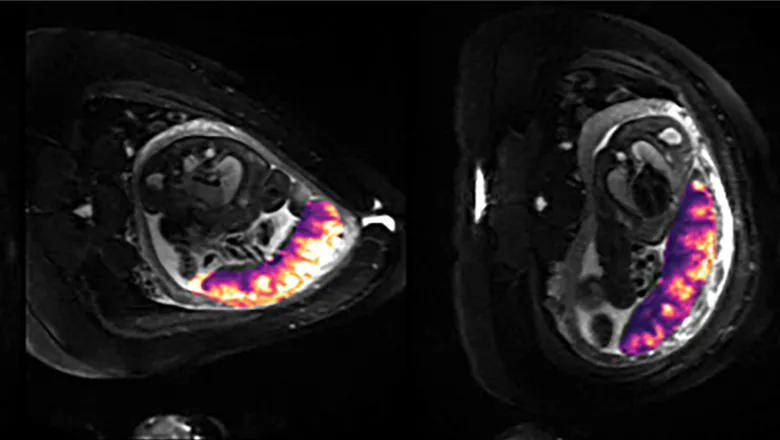15 January 2021
New MRI algorithm provides novel insight about placental blood flow in late pregnancy and stillbirth risk
A Magnetic Resonance Imaging (MRI) algorithm co-developed by Dr Andrew Melbourne from the School of Biomedical Engineering & Imaging Sciences was used in a study to find out why sleeping on your side in late pregnancy is protective against having a stillbirth.

The paper, which was published in the Journal of Physiology, was co-authored by researchers from King's College London, University College London (UCL) and the University of Auckland. It shows that when women lie on their backs, there is an average 6.2% decline in oxygen movement across the placenta. The MRI scans showed why this occurs, as when the mum sleeps in this position, the blood flowing to her uterus is reduced. Reduced oxygen in the placenta may be linked to potential ill health in vulnerable babies before birth and risk of still birth.
The study’s participants were women with healthy pregnancies, who were scanned lying on their backs and on their sides to get a better picture of the effects of the different positions.
The MRI scans showed reductions in blood and placental oxygen concentration when the women laid on their backs. On average, blood flow to the uterus decreased by 23.7% and oxygen movement through the placenta fell by 6.2%.
The study used an innovative placental MRI technique, Diffusion-Relaxation Combined Imaging of the Placenta (DECIDE), developed by a researchers from the Guided Instrumentation for Fetal Therapy and Surgery (GIFT-Surg) project. In addition to Dr Melbourne, they included Professor Anna David and Dr Rosalind Aughwane from UCL.
The new technique uses a combination of MR imaging modalities to differentiate between maternal and fetal contributions to blood flow in the uterus and placenta, as well as oxygen delivery across the placenta.
Dr Andrew Melbourne, Senior Lecturer at the School of Biomedical Engineering & Imaging Sciences, said “MRI is a really powerful tool for seeing how the baby is developing. This research shows that we can use the technology to look in detail at how much oxygen is reaching the baby. Using this new technique, we can see how these measurements can be affected by the mother’s position in the scanner.”
Professor of Obstetrics and Maternal Fetal Medicine at UCL, Anna David said: “These are exciting findings as they may explain why some women with an apparently healthy normal sized baby may nevertheless suffer a stillbirth. They confirm how the message to mums to #SleepOnSide in late pregnancy is very important for a healthy pregnancy.”

